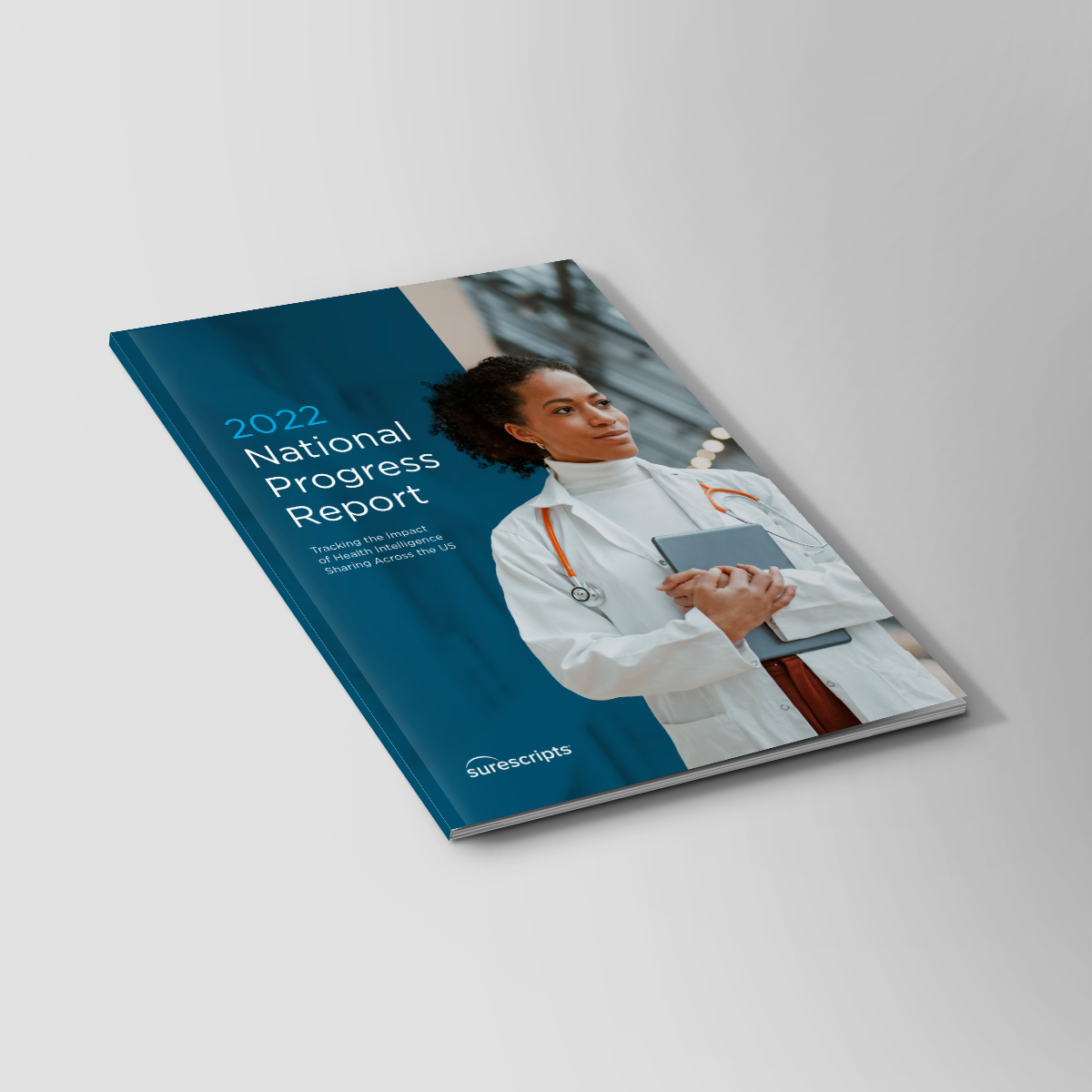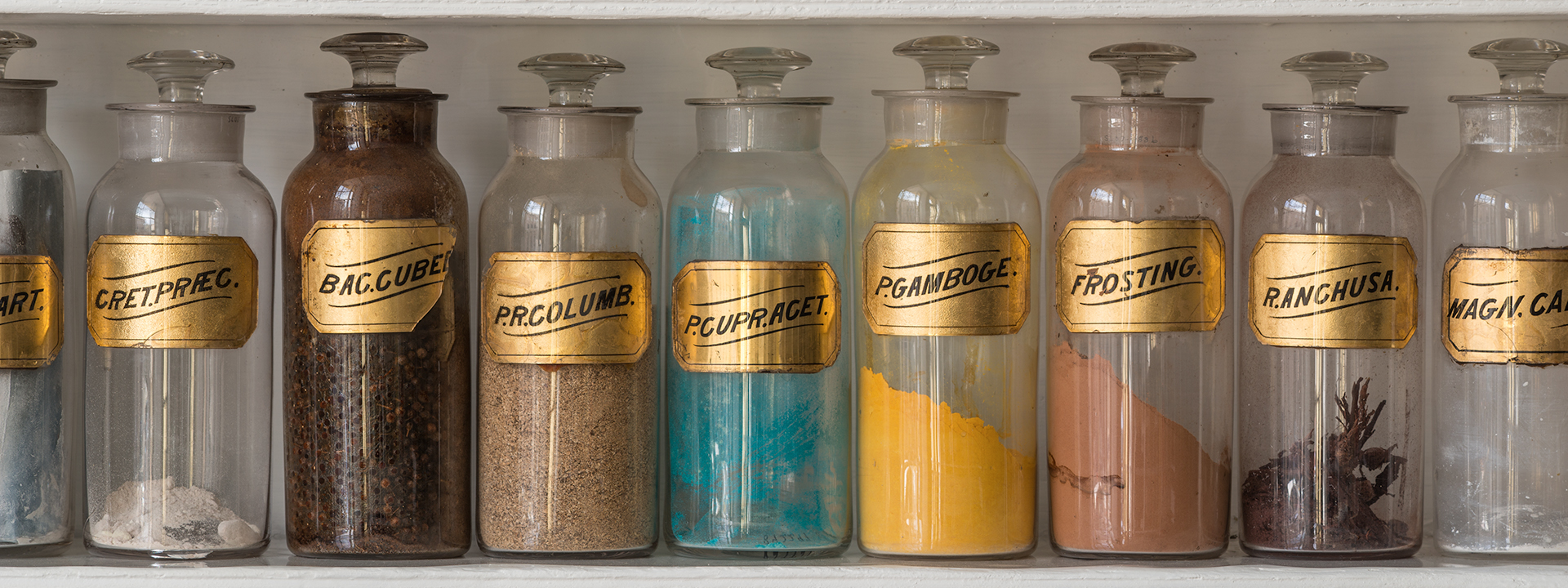The trials facing American healthcare today are impossible to miss.
Budgets are stretched thin. Clinicians are burning out and leaving the field. Understaffed health systems are running below capacity, and rural hospitals especially risk closure. All of this deepens gaps in access to healthcare across our population, which is growing older and facing more chronic conditions.
From my role at Surescripts—stewarding a network that touches the care of virtually every American patient via more than 2 million healthcare professionals and organizations—I see all that. But I see something else, too: real, hard evidence for hope.
Hope is all over the pages of our 2022 National Progress Report. It’s in nationwide statistics, like interoperability flourishing in the form of 21.7 billion network transactions (less than 20% of them related to prescribing, by the way). It’s in stories of how individual healthcare organizations are innovating to make life easier for their staff and patients.
It’s in the big-picture view of how the Surescripts Network Alliance is meeting our shared challenges with shared health intelligence—and making significant headway toward better, safer, less costly care in America.
2022 National Progress Report
See how U.S. healthcare professionals made an impact on some of our biggest challenges with a full year of data from the Surescripts Network Alliance.
Here are five inspiring trends I see in this report, out today.
Greater interoperability is keeping care teams better informed and connected.
Clinicians are tackling medication cost concerns before they hinder adherence.
Healthcare professionals are accessing information that’s richer and more complete.
Care teams are evolving and tapping into existing technologies.
As national policy continued to evolve in 2022, aspects of healthcare interoperability remained in flux. But in a very real sense, interoperability was already up and running for many healthcare professionals in America.
Every time the Surescripts Network Alliance enabled the people who support patient care to share information quickly and efficiently across systems, within their everyday workflows—all of that was interoperability in action.
Looking just at clinical information exchange, more clinicians and organizations tapped into the Carequality interoperability framework via Record Locator & Exchange. The number of clinical documents they retrieved soared past 1 billion for the first time. This technology brought vital intelligence from other healthcare providers into many scenarios: patient intake, hospital admission, transitions of care, specialty medication enrollment.
I’m equally heartened by the growing use of interoperable technology to inform care proactively. In 2022, we exchanged many more Clinical Direct Messaging transactions, leveraging the Direct protocol to alert healthcare providers and care managers to changes in patients’ care or coverage.
This is part of how we work together to deliver better care for each patient—and for patient populations, as we help value-based care realize its full potential with more timely insights.
It’s a truth that pharmacists and prescribers know too well: As out-of-pocket costs rise, medication adherence sinks. And the work needed to find a budget-friendly alternative—possibly involving prior authorization, phone calls and faxes—can add extra frustration.
In 2022, we worked together to cut that unhappy story short for millions of patients. They did it by supplying and using data to discover affordable options (and sometimes avoid the need for prior authorization) before delays or nonadherence could disrupt treatment.
More than half of prescribers on the Surescripts network used Real-Time Prescription Benefit for this purpose in 2022. And when they chose a less expensive option, they saved patients more than $60 on the average prescription.
We also saw an explosion of peer-reviewed research on this topic in 2022. The healthcare community is deepening its understanding of how real-time benefit intelligence influences prescription pickup rates, cancellations, change rates and much more.
At the same time, the prior authorization process itself is becoming less onerous. More prior authorizations were handled electronically in 2022—giving prescribers an answer in under four minutes, on average.
As an uncertain economy stokes financial worries, clinicians should take pride in their ability to send patients to the pharmacy knowing that their medications will be covered, affordable and waiting there to help them.
Every year, we see incredible advances in life sciences that give new hope to patients living with serious conditions. But when you add time-consuming administrative processes to list prices that routinely reach six figures per patient, that innovation can come at a high cost.
In 2022, we helped more patients get life-changing specialty medications with less friction for everyone. Together, we continued to discover more parts of the specialty medication journey that can be automated, like verifying a patient’s weight to inform dosing.
Specialty pharmacy Accredo implemented this enhancement and began receiving patients’ weight values from their most recent medical appointment automatically. In about 1 in 10 cases, this alerted pharmacists to a clinically significant weight change that needed to be reviewed against the prescribed dose.
At scale, every little efficiency adds up—and specialty automation certainly did scale up in 2022. Happily, so did the cost savings to patients. When prescribers used Real-Time Prescription Benefit to choose a less costly specialty medication option, patients saved $428 on average.
For today’s busy care teams, simply getting more information isn’t necessarily a good thing. They need to trust that it’s complete and current, and it has to be easy to consume.
It’s no small feat to optimize data quality and performance at scale, but collaboration across the Network Alliance continued to raise the bar in 2022. Just one example: We worked closely with several electronic health record vendors to fine-tune use of the Structured & Codified Sig prescription element and ensure it was applied to drug classes where it would have the biggest impact. In plain language, this meant pharmacists received more prescriptions with clear, consistent patient directions.
Meanwhile, care teams and care managers referenced medication history data that was more comprehensive and easier to review, thanks to advances in patient matching, data enhancement and deduplication. Yes, Surescripts built these technologies, but their value to clinicians depends on a vast number of people and organizations working to supply high-quality data, create intuitive workflows and learn from each other across the network.
The impact on patient safety and quality care is inspiring—and so is the collective work and vision that made it possible.
As physician shortages loom, preserving access to primary care is a real concern. But a successful future for primary care might look quite different from its recent past.
You can see hints of this future in data like the makeup of new e-prescribers in 2022. More than a quarter were nurse practitioners, and physician assistants made up nearly 10%. Just under 20% of new e-prescribers were dentists, suggesting greater integration into the digital healthcare landscape.
In short, the care team is bigger and more interconnected than ever, and the need for information sharing will only intensify. With health plans and pharmacy benefit managers adopting tools like Clinical Direct Messaging to address concerns like nonadherence and gaps in care, payers too are increasingly active in coordinating care.
Whenever we think about care team evolution, we must consider pharmacies as key players. Analysts predict that retail pharmacy health clinics will double their share of the primary care market in 2023. Physicians and nurse practitioners themselves expect to collaborate more with pharmacists in the near future. And of course, patients across the country glimpsed a larger role for pharmacists as they took on new responsibilities in the fight against COVID-19.
Our data shows that prescriber/pharmacist communication is already accelerating. For instance, transactions like CancelRx and RxChange make it easy for the prescriber to electronically cancel a discontinued medication or for the pharmacist to suggest an alternative. Pharmacies have historically been early adopters of these tools, but in 2022 we saw prescribers racing to catch up.
There is no doubt that we’re in an era of massive, destabilizing change. But there’s powerful momentum in the innovations and partnerships we built and strengthened in 2022. I believe that spirit of collaborative progress can carry us into the future American healthcare needs.
2022 National Progress Report
See how U.S. healthcare professionals made an impact on some of our biggest challenges with a full year of data from the Surescripts Network Alliance.


 Dean Riggott Photography
Surescripts
Dean Riggott Photography
Surescripts

























